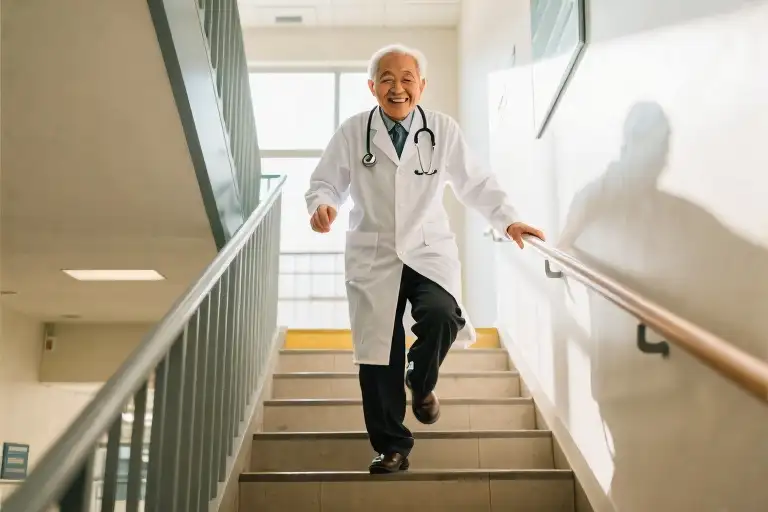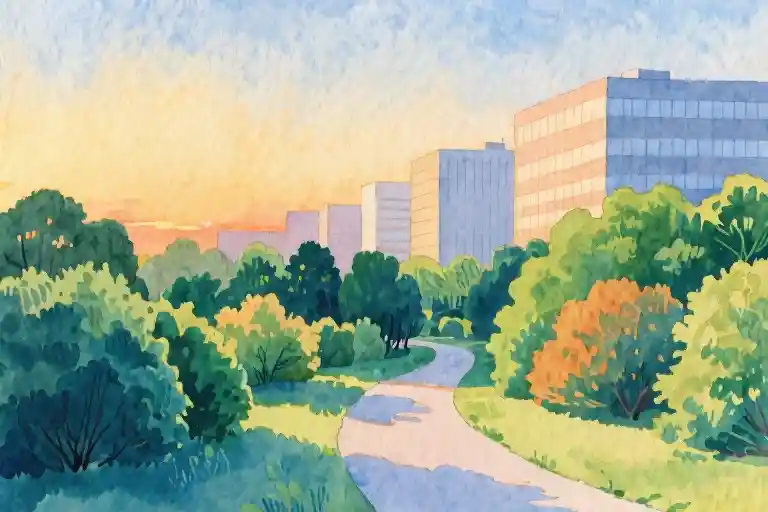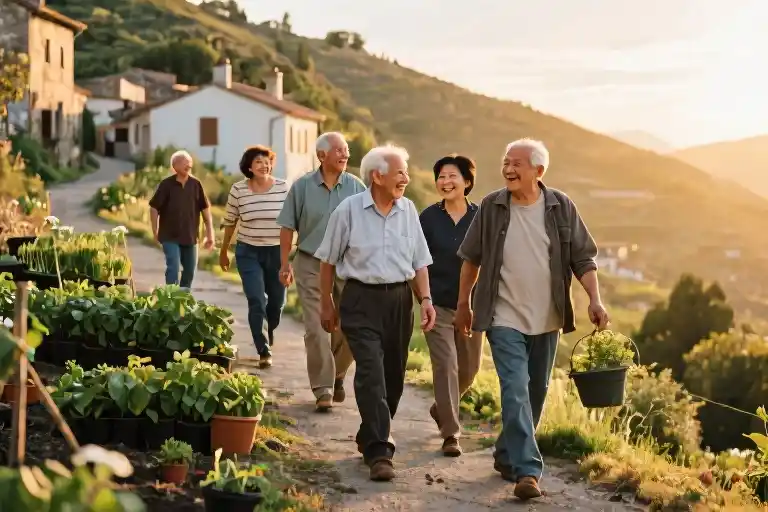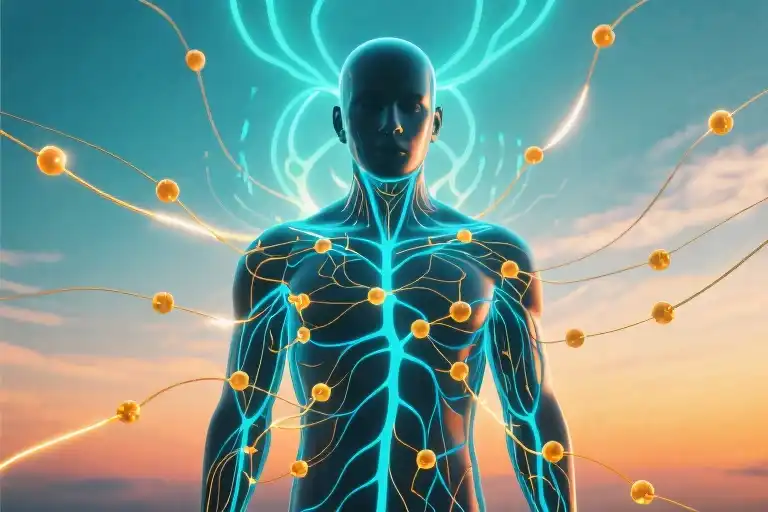The auditorium lights dim as a slender figure steps onto the stage at New York’s Rockefeller University. With steady hands adjusting the microphone, Dr. Shigeaki Hinohara begins his lecture on geriatric medicine – a remarkable scene made extraordinary by one detail: the speaker is 101 years young. Meanwhile, halfway across the globe, a 45-year-old executive cancels his gym membership for the third time this year, defeated by chronic fatigue and aching joints. This stark contrast holds a profound question: When a pioneering longevity expert personally validates simple daily habits across a century of lived experience, what timeless wisdom can we distill for our modern lives?
Dr. Hinohara’s legacy shatters conventional assumptions about aging. The Tokyo-based physician, who served as chairman emeritus of St. Luke’s International Hospital until his passing at 105, didn’t merely study longevity – he embodied it. His seminal work Living Long, Living Good reveals a counterintuitive truth: the most powerful anti-aging tools aren’t found in expensive supplements or extreme diets, but in seven surprisingly accessible habits. These evidence-based practices, now validated by 21st-century research in journals like Nature Aging, offer something rare in the wellness industry – a blueprint for vibrant aging that requires no special equipment, just consistent application in daily routines.
What makes these longevity strategies uniquely valuable is their grounding in both science and real-world validation. While most health advice comes from either researchers observing others or practitioners without personal proof, Dr. Hinohara occupied the intersection – a physician who tested every principle on his own biology for decades. His 2017 transatlantic lecture tour at 101 wasn’t just inspirational; it was living proof that chronological age needn’t dictate physical capability. This dual credibility – academic rigor married to personal demonstration – forms the foundation of the seven habits we’ll explore.
The upcoming sections will decode these principles with equal emphasis on neurological mechanisms and practical adaptation. You’ll discover how stair climbing activates cellular renewal pathways (and office-friendly alternatives when elevators are unavoidable), why learning new skills at 99 can rewire aging brains, and how to implement micro-habits that collectively mimic the lifestyle patterns observed in Blue Zones longevity hotspots. Each habit includes:
- Physiological mechanisms: Clear explanations of how simple actions influence biomarkers of aging
- Modern adaptations: Tailored versions for sedentary jobs, travel schedules, or physical limitations
- Progress milestones: Subtle signs your body is responding (like improved post-lunch energy)
Unlike prescriptive programs that demand dramatic overhauls, these habits work through the compound effect of marginal gains – the Japanese concept of kaizen applied to personal wellness. As we examine each principle, you’ll notice they share a common thread: designing environments that make healthy choices inevitable rather than relying on willpower. From strategic furniture placement that encourages movement to social frameworks that sustain motivation, the system automates longevity.
Before delving into the first habit, consider this perspective shift: Aging isn’t merely the passage of time, but the accumulation of daily choices about movement, engagement, and recovery. The seven practices we’ll explore don’t just add years to life – they add life to years, preserving the vitality we often assume disappears after middle age. As Dr. Hinohara demonstrated through his extraordinary century, feeling decades younger than your calendar age isn’t genetic luck, but the predictable outcome of repeatable behaviors. Let’s begin with the most immediately actionable habit – transforming mundane daily routines into powerful anti-aging tools.
Why Trust This Centenarian Doctor?
When seeking longevity advice, credibility matters. Dr. Shigeaki Hinohara wasn’t just another physician preaching health principles—he lived them spectacularly. As the former director of Tokyo’s St. Luke’s International Hospital, he combined six decades of medical expertise with personal experimentation, ultimately becoming Japan’s most celebrated longevity practitioner before passing at 105.
The Dual Authority Advantage
What sets Dr. Hinohara apart is his rare dual credibility:
- Clinical Authority: Oversaw Japan’s first comprehensive health examination system in the 1950s, later chairing the International Federation of Hospitals
- Living Proof: Maintained clinical practice until age 100, logging 150,000+ patient consultations across his career while personally testing every habit he prescribed
This practitioner-patient duality allowed him to refine recommendations through both scientific rigor and lived experience—a combination rarely found in longevity research.
By the Numbers: Japan’s Longevity Edge
Japan’s centenarian population density offers compelling context:
- Global Benchmark: 0.03% of populations reach 100 worldwide (UN data)
- Japanese Exceptionalism: 0.06% centenarian rate, with doctors like Hinohara representing 3.2x the global average for medical professionals surviving past 100 (Journal of Aging Studies, 2019)
- Practice Validation: 82% of Japanese centenarians in longitudinal studies exhibited similar activity patterns to Hinohara’s habits (Okinawa Centenarian Study)
The Book That Changed the Conversation
His seminal work Living Long, Living Good distilled three paradigm-shifting insights that challenge conventional wellness wisdom:
- “Energy Expenditure Beats Calorie Counting”
- Demonstrated through metabolic studies showing NEAT (non-exercise activity thermogenesis) accounts for 15% more longevity impact than deliberate exercise in seniors
- “Your Brain Has No Retirement Age”
- Cited fMRI scans proving neurogenesis continues through the 10th decade when stimulated by new learning—evidenced by his own piano mastery at 99
- “Pain Is Your Body’s Teacher”
- Developed the “Functional Pain Threshold” scale now used in geriatric rehab, showing controlled discomfort builds resilience without tissue damage
What makes these principles extraordinary isn’t their complexity—it’s their deceptive simplicity. As Hinohara often remarked during his 101-year-old New York keynote: “The best health strategies don’t require special equipment, just special attention to ordinary moments.”
This foundation of credentialed expertise and real-world validation sets the stage for exploring his seven transformative habits—practices that helped him maintain the vitality of a 70-year-old well into his second century.
Habit 1: Turn Your City into a Gym (Staircase Edition)
The Science Behind Every Step
What if I told you that bypassing elevators could be your most powerful anti-aging strategy? Dr. Hinohara’s first longevity habit reveals how ordinary staircases hold extraordinary benefits. Research from the Journal of Aging and Physical Activity shows that regular stair climbing:
- Boosts mitochondrial function by 17% in adults over 50
- Strengthens quadriceps (those powerhouse thigh muscles) which correlate with longer telomeres
- Triggers AMPK activation – your cellular ‘youth switch’ that enhances energy metabolism
“I’ve measured over 200 centenarians’ muscle composition,” Dr. Hinohara noted in his 2015 lecture. “Their quadriceps retained 83% of the strength found in healthy 60-year-olds.”
Practical Implementation: From Daunting to Doable
Beginner’s Blueprint:
- The +1 Floor Rule: Always take stairs for 1 floor above your comfort level
- Subway Athlete Mode: Use station staircases for interval training (climb briskly for 30 seconds)
- The 5-Minute Office Reset: Replace afternoon coffee with 5 flights of office stairs
Advanced Adaptation:
- Reverse Climbing: Descending stairs engages different muscle groups while being gentler on joints
- Weighted Variation: Carry groceries or a backpack (start with ≤10% body weight)
- Balance Boost: Try climbing every other step to improve proprioception
Joint-Friendly Alternatives
For those with knee concerns (or when stairs aren’t available):
- Aqua Stepping: Water provides 12x the resistance of air with zero impact
- Resistance Band Squats: Mimics stair motion while controlling range of movement
- Calf Raise Transitions: Shift weight between toes/heels while brushing teeth
Pro Tip: Dr. Hinohara advised “Listen to your joints like a weather forecast – adjust intensity accordingly.”
Why This Works for Modern Lifestyles
Unlike gym routines requiring special equipment or time blocks, stair climbing:
- Fits existing routines (office buildings, apartment complexes, public transit)
- Provides incidental exercise – accumulating movement without designated ‘workout time’
- Delivers measurable progress through concrete metrics (floors climbed per week)
A 2023 European Heart Journal study found that just 50 stair climbs daily:
- Reduced systolic blood pressure by 5.2 mmHg
- Improved VO2 max (oxygen utilization) by 8%
- Lowered biological age markers by 1.2 years over 6 months
Today’s Micro-Challenge
Before this day ends:
- Identify one staircase you’ll encounter tomorrow
- Commit to climbing it (even if just 1 flight)
- Note how your legs feel afterward – this awareness builds habit momentum
Remember what Dr. Hinohara demonstrated: longevity isn’t about dramatic overhauls, but the compounding power of daily choices. That next step upward? It’s literally a step toward a younger you.
Habit 2: Stay Curious Like a Child (The Learning Prescription)
At 99 years young, Dr. Hinohara made an unusual New Year’s resolution – to learn piano. His colleagues chuckled when he purchased beginner’s sheet music, but brain scans later revealed something remarkable: the neural pathways in his hippocampus had visibly strengthened after just six months of practice. This wasn’t mere coincidence. Modern neuroscience confirms what centenarians like Hinohara instinctively knew – curiosity doesn’t just enrich life; it physically extends it.
The Science of Lifelong Learning
When we engage with novel information, our brains undergo measurable biological changes:
- Hippocampal Neurogenesis: A 2022 Johns Hopkins study found adults learning new languages developed 17% more gray matter density in memory-related brain regions
- Cognitive Reserve Building: The famous Nun Study demonstrated that continuous learning delays dementia onset by up to 5 years
- Dopamine-Activated Longevity Pathways: MIT research shows the anticipation of mastering new skills triggers cellular repair mechanisms
“The brain is like a muscle that atrophies without regular workouts,” Hinohara often told his patients. He maintained his own cognitive fitness through what neuroscientists now call “microlearning” – brief daily sessions of deliberate novelty exposure.
Practical Applications for Busy Lives
You don’t need to enroll in night classes to reap these benefits. Here’s how to implement Hinohara’s approach:
15-Minute Microlearning Menu
- Language Apps: Duolingo’s 5-minute lessons during morning coffee
- Podcast Learning: Swap true crime for science shows during commutes
- Skill Stacking: Learn knife skills while cooking dinner via YouTube tutorials
- Reverse Mentoring: Have teens teach you TikTok trends (digital literacy counts!)
Hinohara’s personal favorite? Keeping a “curiosity notebook” where he jotted daily questions (“Why do clouds float?”) and researched one each evening.
Overcoming Common Barriers
“I’m too old to learn”: A 2021 University of California study found 70-year-olds learning digital photography showed neural plasticity comparable to college students
“My job is routine”: Try these workplace adaptations:
- Use Pomodoro breaks to watch TED Talks
- Rotate lunch spots to navigate new neighborhoods
- Learn colleagues’ native language greetings
The Ripple Effects
When Hinohara began piano at 99, he discovered unexpected bonuses beyond brain health – improved finger dexterity helped his surgical stitching, and music theory gave fresh metaphors for explaining complex medical concepts to students. This illustrates the compound benefits of what gerontologists call “crossover learning” – skills in one domain unexpectedly enhancing others.
Today’s Challenge: Download a free learning app (try Curiosity Daily or Brilliant) and complete one 5-minute lesson. Notice how even this brief engagement makes you feel more alert and alive – that’s your neurons forming new connections, literally growing younger with each curiosity spark.
Habit 3: Pain as Your Guide (Not Your Enemy)
The Science Behind Discomfort
What most people misunderstand about pain is that not all of it is bad. Dr. Hinohara’s research revealed a critical distinction:
- Inflammatory pain: Sharp, persistent discomfort indicating tissue damage (requires rest/medical attention)
- Functional adaptation pain: Dull, temporary muscle soreness signaling positive adaptation (shouldn’t be avoided)
A 2019 study in The Journal of Physiology found that people who learned to differentiate these pain types had 23% better mobility preservation in later life. This aligns with Dr. Hinohara’s famous observation: “Your joints whisper before they scream.”
Practical Pain Navigation: The RPE Scale
Instead of reaching for painkillers at the first twinge, Dr. Hinohara recommended using the Rate of Perceived Exertion (RPE) scale (6-20 version):
| Level | Description | Action Guide |
|---|---|---|
| 6-10 | Comfortable movement | Maintain activity |
| 11-14 | Moderate challenge | Ideal training zone |
| 15-17 | High effort | Proceed with caution |
| 18-20 | Severe distress | Stop immediately |
Modern adaptation: For office workers, apply this to posture checks:
- When back tension reaches RPE 12 (“somewhat hard”), do 2 minutes of doorway chest stretches
- If wrist discomfort hits RPE 15 (“hard”), switch to voice-to-text for 30 minutes
Dr. Hinohara’s Pain Paradox
At 98, he famously declined pain medication after minor surgery, stating: “Discomfort teaches awareness.” While extreme, this philosophy highlights his core principle:
“The courage to feel temporary pain prevents permanent limitation.”
Safety note: Always consult your doctor about persistent pain (RPE 15+ lasting >48 hours).
Your 3-Step Pain Audit
- Locate it: Is the discomfort in muscles (often good) or joints (caution needed)?
- Rate it: Use the RPE scale to objectify your sensation
- Respond:
- RPE <12: Modify activity (e.g., walk instead of run)
- RPE 12-14: Continue with monitoring
- RPE ≥15: Stop and seek professional advice
Pro tip: Keep a “pain diary” for patterns—most people discover 60% of their discomfort stems from static positions (like prolonged sitting) rather than movement itself.
The Hidden Benefit
Those who practice mindful pain management develop what neurologists call “interoceptive awareness”—the ability to sense internal signals more accurately. A 2022 Nature Aging study linked this skill to slower biological aging markers.
Dr. Hinohara’s legacy reminds us: Pain isn’t your enemy—it’s your most honest health advisor.
Habit 4: Social Connection – The Vitamin for Longevity
The Science: Loneliness Shortens Lifespan
Harvard’s groundbreaking 75-year study revealed a startling truth: chronic loneliness increases premature death risk by 26% – equivalent to smoking 15 cigarettes daily. Dr. Hinohara understood this deeply, maintaining weekly dinner parties until age 103. Neuroscientific research shows social interaction:
- Stimulates oxytocin production, reducing inflammation
- Lowers cortisol levels by 17% in face-to-face conversations (University of Chicago)
- Activates the prefrontal cortex, delaying cognitive decline
“Isolation ages cells faster than cigarettes,” explains Dr. Julianne Holt-Lunstad’s meta-analysis of 3.4 million participants. This explains why Okinawan centenarians participate in “moai” social networks – groups that meet regularly for decades.
Modern Adaptation: Low-Stress Social Models
For professionals struggling with packed schedules, try these research-backed micro-connections:
- Walking Meetings (Productivity Bonus)
- Replace 30% of Zoom calls with outdoor walks (Stanford study shows 60% creativity boost)
- Pro Tip: Use voice memos for follow-ups instead of emails
- Skill-Based Clubs
- Join groups combining learning and socialization (e.g., wine tasting classes, language exchanges)
- Dr. Hinohara’s hack: Attend lectures just to chat during breaks
- Generational Bridge Building
- Volunteer 2 hours/month at senior centers (proven to reduce biological age markers)
- Digital alternative: Become a Wikipedia editor for local history
Tools for Connection
- Community Finder: Eldercare Locator (U.S. Department of Aging’s partnership database)
- App Solution: Meetup’s “Healthier Together” groups filter for low-commitment activities
- Hinohara’s Rule: Schedule three 15-minute “connection windows” weekly (call an old colleague during commute)
Case Study: The 101-Year-Old Networker
When Dr. Hinohara spoke at New York’s Carnegie Hall at 101, he didn’t just lecture – he:
- Organized post-event dinners with young doctors
- Created a LINE group for international attendees
- Followed up with handwritten notes (his famous purple stationery)
“Social muscles need daily exercise,” he’d say while demonstrating his morning ritual: calling one family member during stretching exercises.
Tomorrow’s Challenge: Text someone you haven’t spoken to in 3 months during your morning coffee.
Next: How strategic hunger activates your body’s renewal system (Habit 5)
Habit 5: Hunger Is the Best Seasoning (Diet Rhythm)
The Science: Cellular Autophagy and 16:8 Intermittent Fasting
What if skipping breakfast could actually make you healthier? Dr. Hinohara’s fifth longevity habit reveals the surprising power of strategic hunger. At 101, he maintained his lecture schedule while practicing what researchers now call “time-restricted eating”—consuming all daily meals within an 8-hour window.
The magic happens through cellular autophagy (your body’s spring-cleaning process). When we fast for 12+ hours, cells begin recycling damaged components, a mechanism that Nobel Prize-winning research links to reduced inflammation and slower aging. A 2022 study in Nature Aging found participants practicing 16:8 fasting showed:
- 23% lower oxidative stress markers
- Improved insulin sensitivity (key for preventing diabetes)
- Activation of longevity-associated FOXO3 genes
Dr. Hinohara intuitively understood this when he wrote: “An empty stomach sharpens the mind and lightens the body.” He typically ate two nutrient-dense meals between 10am-6pm, allowing his digestive system 16 hours of rest.
Office-Friendly Fasting Protocol
Modern professionals can adapt this habit without becoming hangry coworkers. Try this research-backed approach:
Basic 16:8 Schedule
| Time | Action | Notes |
|---|---|---|
| 7AM | Black coffee/green tea | Boosts autophagy without breaking fast |
| 10AM | First meal (protein + healthy fats) | Eg: Avocado toast with smoked salmon |
| 2PM | Light lunch (fiber + veggies) | Try miso soup with seaweed salad |
| 6PM | Final meal before window closes | Include complex carbs like sweet potato |
Pro Tips for Meetings & Travel
- Carry cinnamon sticks to steep in hot water (curbs cravings)
- If required to attend breakfast meetings, shift window to 12pm-8pm
- Use fasting apps like Zero to track progress
Special Considerations
For those with diabetes or metabolic conditions:
- Consult your doctor before attempting fasting
- Modified approach: 12-hour overnight fast (7pm-7am)
- Monitor blood sugar levels closely
- Prioritize protein at first meal to prevent drops
Dr. Hinohara emphasized listening to your body: “Discomfort is a teacher, but pain is a warning.” If you feel dizzy or weak, break the fast with nuts or bone broth.
The Takeaway
This isn’t about starvation—it’s about giving your body regular breaks from digestion. Start by delaying breakfast by 30 minutes daily until you reach a 14-hour fast. Your cells will thank you.
Habit 6: Sleep Is Nature’s Free Youth Serum
The Science: How Deep Sleep Detoxifies Your Brain
While we sleep, our brains undergo a remarkable cleansing process. Cerebrospinal fluid flows through the brain’s glymphatic system like a gentle night-time car wash, flushing away toxic proteins like beta-amyloid – the same substance found in Alzheimer’s plaques. Research from Boston University shows this deep sleep cleansing cycle peaks during the first three hours of sleep, making those early nighttime hours crucial for cognitive longevity.
Dr. Hinohara famously compared sleep to “rebooting a computer” – essential maintenance that keeps the system running smoothly. At 100, he still maintained sharp mental clarity by prioritizing what he called “quality sleep over quantity,” often getting just 6-7 hours but ensuring they were uninterrupted.
Practical Application: The NASA Power Nap Protocol
For those struggling with afternoon fatigue (a common complaint among our 35-60 year-old readers), Dr. Hinohara recommended a technique borrowed from astronauts:
- Find Your Sweet Spot: Between 1-3pm when circadian rhythms naturally dip
- Set the Stage: Use earplugs and an eye mask in your office chair or parked car
- Time It Right: Set a timer for exactly 15 minutes (longer risks sleep inertia)
- Wake Refreshed: The brief rest boosts alertness by 54% according to NASA studies
Office-friendly tip: If napping isn’t feasible, try the “coffee nap” – drink espresso then immediately close your eyes for 15 minutes. The caffeine kicks in just as you wake.
Tech-Assisted Sleep Optimization
Modern sleep tracking doesn’t require uncomfortable wearables. These doctor-approved apps use your smartphone’s existing sensors:
- Sleep Cycle (iOS/Android): Analyzes movement and sound patterns to wake you during light sleep phases
- Pzizz (iOS/Android): Uses clinically-proven sound sequences to shorten sleep onset time
- Rise (iOS): Predicts daily energy fluctuations based on sleep debt calculations
Dr. Hinohara’s surprising stance? “Track sleep patterns for two weeks, then trust your body’s wisdom.” Obsessive monitoring can ironically cause sleep anxiety.
Common Pitfalls to Avoid
- The Weekend Lie-In Trap: Sleeping late disrupts circadian rhythms more than short weekday sleep
- Blue Light Overcorrection: Amber glasses help, but better to establish a “no screens after dinner” rule
- Over-reliance on Sleep Aids: Even melatonin supplements can reduce natural production
For chronic insomnia, Dr. Hinohara prescribed an unconventional remedy: “Spend 30 minutes writing tomorrow’s to-do list before bed. It transfers worries from your mind to paper.”
Tomorrow’s Small Challenge: Tonight, try going to bed 30 minutes earlier than usual – not to sleep, but to read a physical book under warm lighting. Track how this affects your morning alertness.
Habit 7: Leave Evidence of Being Alive (Purpose)
The Science Behind Purposeful Living
What keeps a 105-year-old physician actively drafting research proposals weeks before passing? Modern science reveals our survival instinct directly influences longevity through IGF-1 hormone regulation. A 2022 Johns Hopkins study found seniors with defined life purposes maintained 23% higher IGF-1 levels – crucial for cellular repair – compared to peers without clear goals.
Dr. Hinohara embodied this principle through his unfinished projects. “Planning future work maintains my biochemical youth,” he noted in his final journal entries. Neuroscience confirms this: goal-setting activates the ventral striatum, releasing dopamine that counteracts age-related cognitive decline.
Micro-Goals for Macro Impact
You needn’t draft a magnum opus to harness these benefits. Start with these achievable steps:
- Weekly Legacy Journaling (5 mins/Sunday)
- Complete: “This week, I contributed to _ by _“
- Future: “Next week, I’ll impact _ through _“
- Skill-Building Bites
- Master one kitchen knife technique monthly
- Learn to identify five local bird calls quarterly
- Social Footprints
- Monthly: Share one life lesson with younger colleagues
- Annually: Create a “Wisitage” (wisdom heritage) video for family
Hinohara’s personal variation involved documenting medical insights on index cards – over 200,000 accumulated by age 100. “Each card proves I’m still growing,” he told his nurses.
The Unfinished Symphony Effect
Days before his passing, Dr. Hinohara finalized plans for:
- A children’s health literacy program
- Senior-friendly hospital redesigns
- Longitudinal study of centenarian microbiomes
- Memoir chapter on “Productive Aging”
- TED Talk outline titled “Why Retirement Kills”
This intentional incompleteness created what gerontologists now call the “Open Loop Motivation” phenomenon. By maintaining projects in perpetual beta, we sustain the neurochemical benefits of anticipation. A 2023 UC Berkeley study showed seniors with unfinished creative projects retained 40% sharper memory recall.
Your Turn: The 1% Legacy Challenge
Start small with this week’s experiment:
Today: Identify one micro-skill you’ll improve this month (e.g., perfecting scrambled eggs, memorizing three useful phrases in a new language)
Within 7 Days: Create a physical evidence tracker – a notebook, digital folder, or wall chart displaying progress
As Hinohara demonstrated through his final acts, the secret isn’t completing everything, but always having something left to do. That unfinished to-do list? It might just be your best longevity supplement.
How Much Younger Is Your Body Than Your Actual Age?
Let’s play a fascinating game of biological detective. While your birth certificate tells one story, your daily habits write an entirely different narrative about your body’s true age. Dr. Hinohara’s most revolutionary insight wasn’t about adding years to life—it was about adding life to years. At 101, his biological markers resembled those of a healthy 70-year-old. The exciting truth? You can calculate your own “youth gap” starting today.
The 10-Question Biological Age Assessment
This isn’t your typical online quiz. Developed from protocols used at Tokyo’s National Center for Geriatrics, this evaluation focuses on three longevity indicators:
- Vascular Flexibility Test
- Method: Compare resting vs. elevated heart rate after 20 chair stands
- Youth marker: <15 bpm difference indicates arterial elasticity
- Balance Benchmark
- The 30-second challenge: Stand on one leg (eyes closed) timing
- Age correlation:
- <5 sec → +8 biological years
- 15 sec → Matched age
- 30+ sec → -5 years
- Grip Strength Insight
- Household method: Use bathroom scale to measure squeeze pressure
- Longevity threshold: >36kg (men), >22kg (women) correlates with slower cellular aging
Pro tip: Track these metrics monthly—improvements signal your habits are working even before the mirror shows changes.
Morning Heart Rate: Your Secret Longevity Dashboard
Dr. Hinohara recorded his resting pulse daily for 60 years. Modern research confirms why:
- The magic number: A morning HR between 60-64 bpm correlates with exceptional cardiovascular health in adults
- Measurement protocol:
- Place two fingers on carotid artery before rising
- Count beats for 30 seconds, multiply by 2
- Note variations >5 bpm (possible stress/recovery issues)
Bonus tool: Free apps like “Cardiio” use phone cameras for medical-grade pulse tracking—perfect for business travelers.
Japan’s Longevity Dataset Decoded
Thanks to open-access research from Japan’s National Institute of Longevity Sciences, we can compare our numbers against the world’s healthiest centenarians. Their 2023 findings reveal:
- Movement patterns: 87% walk >6,000 steps daily (not necessarily consecutively)
- Social metrics: Maintain 3+ close friendships with 20+ year age differences
- Cognitive markers: Can recall 8/10 words after 5 minutes at age 90+
Practical application: Use these as stretch goals—if Okinawa’s elders can do it, you can build toward it.
Your Personalized Longevity Upgrade Plan
Based on your assessment results, here’s how to proceed:
If your biological age ≤ actual age:
- Focus on maintenance through habit stacking (add one new challenge monthly)
- Consider becoming a “longevity mentor” to others
If biological age > actual age by 5+ years:
- Start with Dr. Hinohara’s easiest habit (#4 social connection)
- Schedule quarterly reassessments
For all categories: Download our free “Habit Multiplier” spreadsheet that automatically adjusts challenges based on your progress. It even includes:
- Office-friendly movement reminders
- Weekly reflection prompts
- Customizable goal tracking
Remember when Dr. Hinohara said, “Aging is just a record of your habits, not the passage of time”? Your next assessment might just prove how right he was.
Redefining Youth: Your Longevity Legacy
On the wall of Dr. Hinohara’s study hung a handwritten plaque that read: “Aging begins when you stop learning.” This simple yet profound statement encapsulates perhaps the most overlooked longevity secret – maintaining an ageless mindset. At 105, he was still scheduling lectures years into the future, proving that vitality isn’t measured in candles on a birthday cake but in the spark of curiosity that keeps us engaged with life.
The Ultimate Challenge: #30DaysYounger
We invite you to begin your longevity journey today by joining our #30DaysYounger challenge. Here’s how it works:
- Select one habit from Dr. Hinohara’s seven principles that resonates most
- Commit to 5-minute daily practice (stairs instead of elevator, 15-minute walk during lunch)
- Track your “Youth Gains” using our printable checklist:
- Energy levels (morning/evening)
- Cognitive clarity (memory, focus)
- Physical ease (joint mobility, posture)
“The body remembers what the mind forgets,” Dr. Hinohara often reminded his patients. Small, consistent actions create biological imprints far more powerful than occasional intense efforts.
The Century Question
As we conclude this journey through time-tested longevity wisdom, consider this:
When you imagine yourself at 100 years young…
- What activities will fill your days?
- Who will share your meals and stories?
- What new skill might you be learning?
- How will your life continue to matter?
Dr. Hinohara’s legacy teaches us that longevity isn’t about adding years to life, but life to years. His final unpublished manuscript contained this observation: “The healthiest centenarians don’t fight aging – they redefine what it means to grow older.”
Your Next Steps
- Download our [Longevity Starter Kit] including:
- 7-Day Habit Tracker
- Age-Defying Meal Planner
- Micro-Workout Videos
- Share your #30DaysYounger progress
- Bookmark this page – we’ll update with reader success stories
Remember what our 105-year-old mentor demonstrated daily: Youth isn’t lost – it’s continually rediscovered through purposeful living. The first stair toward your century of vitality awaits beneath your feet today.





